
HAPPY EASTER!



“One morning I woke up with my head in the shower and my feet by the toilet. The children were with their grandparents for the weekend, and I used that as an excuse to binge. My knuckles were bleeding, my face was red, my body was bloated, and my mind was on edge. It scared me. All the rules I had set years before when I reentered the drinking world had gone out the window by the end of that first year of the pandemic. I was drinking away my crippling fears about the end of the world and how the children I’d brought into it would navigate it. Meanwhile, I couldn’t navigate it myself.” (p. 267-268)
Margo Price, a Nashville-based singer and songwriter with three albums, a nomination for a Grammy for Best New Artist, and a performance on Saturday Night Live, narrates this harrowing story of her difficult life.
Margot struggled as a kid, never fitting in. But she was drawn to music and taught herself how to play the guitar. For years, Margot worked as a waitress while she pursued her dream of becoming a singer. She wrote songs and performed on street corners. She fell in love with another musician, Jeremy, but their relationship was stormy.
The music industry, as Margot describes it, is harsh and difficult. As a result, she and Jeremy turned to drugs and alcohol. That did not improve their relationship. As far as I can tell, it did not improve their chances at success in the the music industry, either. Only years of persistent performing and touring finally brought some acclaim and a growing audience for Margot’s songs.
If you want to read a no-holds-barred description of life as a performer today with endless tours and a myriad of problems navigating life on the road, Maybe We’ll Make It is the Real Deal. GRADE: A
TABLE OF CONTENTS:
“Singing is not a real job,” a guidance counselor once told a teenage Margo Price. What she shows us in her moving memoir is what a heck of a lot of work it is. She arrives in Nashville as a 19-year-old college dropout. She drinks too much, does drugs, duct tapes a bloody foot because she doesn’t have health insurance—and that’s in her first weeks. Ms. Price is a deeply original singer-songwriter—her sound is influenced by alt-country, folk rock and psychedelic music. Her songs veer from autobiographical to almost novelistic, like “Lydia,” about a woman at the doors of an abortion clinic. “Maybe We’ll Make It” gives us a glimpse into the life of a touring musician (“small spaces, bad sound equipment, and hordes of drunk folks”) and the rejection she faced (“We are aware of who Margo is and we are not interested,” one label writes). It wasn’t until she was in her mid-30s, and had been writing and performing in Nashville for close to two decades, that she was nominated for the 2019 Grammy for best new artist. Here, you sense, is someone who has fought every day for what she wants to do—and a reminder of how much unseen toil goes into a creative life.
You can read the complete article here.

Stephen King’s informative introduction provides background to a writer I wasn’t familiar with. William Sloane wrote To Walk the Night in 1937 and The Edge of Running Water in 1939. Both stories contain elements most of us would consider Lovecraftian. There are a couple of strange deaths, a beautiful but mysterious woman, cryptic mathematics, peculiar machines, bizarre science, and all around weirdness.
To Walk the Night is narrated by Barkley whose friend has just died. Barkley relates the events leading up to the death to the father of his friend. Barkley and his friend, Jerry Lister, discovered the burnt body of Professor LeNormand who was investigating some arcane mathematics. Somehow, LeNormand’s body looked like someone had taken a blow-torch to it…in the locked observatory. Jerry becomes obsessed with the mathematics LeNormand was working on…and equally obsessed with LeNormand’s beautiful, but eerie, wife.
The Edge of Running Water is narrated by Richard Sayles, friend of polymath Julian Blair, who calls for help when his weird project hits a sticking point. It takes time for Sayles to discover what Blair is secretly working on. Meanwhile, Mrs. Marey, the housekeeper, is found dead. Is it related to Blair’s secret project? Stephen King praises the first line of The Edge of Running Water: “The man for whom this story is told may or may not be alive.” You know from that moment that this story will be creepy!
William Sloan worked for a number of publishing housing and served as the managing director of the Rutgers University Press. He also established and managed his own company, William Sloan Associates and served on the faculty of the Bread Loaf Writers’ Conference in Vermont. Stephen King laments that Sloan didn’t continue to write in this sophisticated horror genre. But, at least we have two scary stories to enjoy in The Rim of Morning. GRADE: B+ (for both)

This compilation CD from 1996 mixes well known groups like ABBA with more obscure groups like Rusted Roof. There doesn’t seem to be any theme to this music CD other including songs that were hits in their day. Do you recognize these songs? Any favorites? GRADE: B+
TRACK LIST:
| 1 | ABBA– | Dancing Queen | 4:08 |
| 2 | Van Morrison– | Brown Eyed Girl | 3:03 |
| 3 | Rusted Root– | Send Me On My Way | 4:20 |
| 4 | John Cougar Mellencamp– | Jack And Diane | 4:14 |
| 5 | Smokey Robinson & The Miracles*– | The Tracks Of My Tears | 2:55 |
| 6 | The Moody Blues– | Nights in White Satin | 7:24 |
| 7 | Cream (2)– | Sunshine Of Your Love | 4:10 |
| 8 | Bon Jovi– | Wanted Dead Or Alive | 5:06 |
| 9 | The Police– | Every Breath You Take | 4:13 |
| 10 | Frankie Valli– | Grease | 3:23 |
| 11 | Bryan Adams– | Summer Of ’69 | 3:33 |
| 12 | Rush– | Tom Sawyer | 4:32 |
| 13 | Barry White, Love Unlimited Orchestra– | Love’s Theme | 4:08 |
| 14 | James Brown– | Cold Sweat | 2:51 |
| 15 | Peter Frampton– | Show Me The Way | 4:39 |
| 16 | Rod Stewart– | Every Picture Tells A Story | 5:57 |
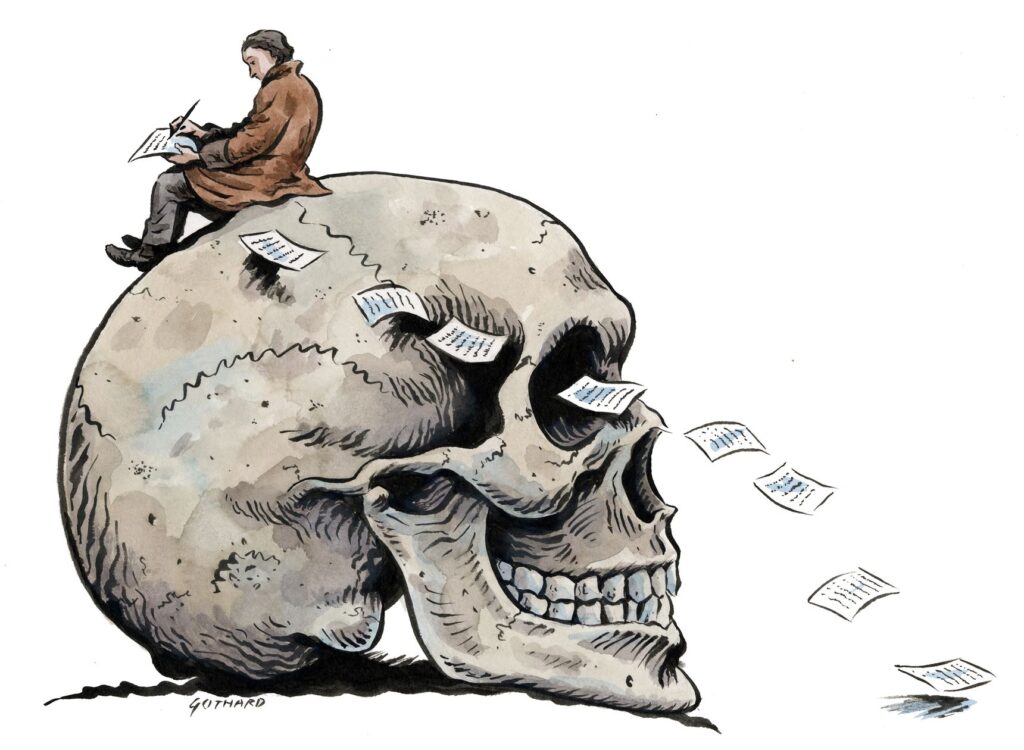
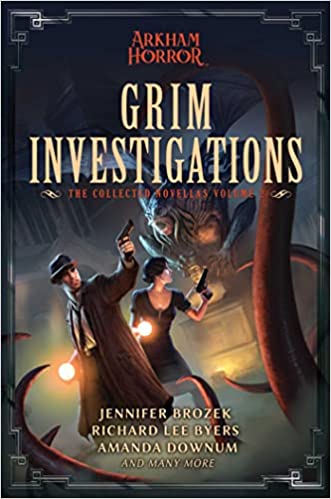
I picked up this anthology of H. P. Lovecraft pastiches and set the bar low. Jennifer Brozek’s “To Fight the Black Wind” involves a psychologist named Carolyn Fern who is treating a woman who bloody wounds on her back seem to be caused by something inside of her…trying to get out! I especially enjoyed the journey Fern and her patient take to The Dreamlands. GRADE: B-
My favorite story in Grim Investigations is “Blood of Baalshandor” by Richard Lee Byers. I love stories about arcane, mysterious books with hellish powers! Stage magician Dexter Drake and his lovely assistant Molly run into a group in Arkham who want to use to use the forbidden knowledge in The Blood of Baalshandor to bring forth an evil being from a different plane. Hair-raising adventures result! GRADE: B
I wasn’t drawn into “Dark Revelations” by Amanda Downum where a writer visits Arkham to finish a novel of her fellow author. But, the words escape and all hell breaks loose! GRADE: C
If you’re a fan of Lovecraft pastiches, these novellas provide some diversion.
TABLE OF CONTENTS:
“To Fight the Black Wind” By Jennifer Brozek — 7
“Blood of Baalshandor” By Richard Lee Byers — 151
“Dark Revelations” By Amanda Downum — 269
Investigator Origins — 393
ABOUT THE AUTHORS — 457
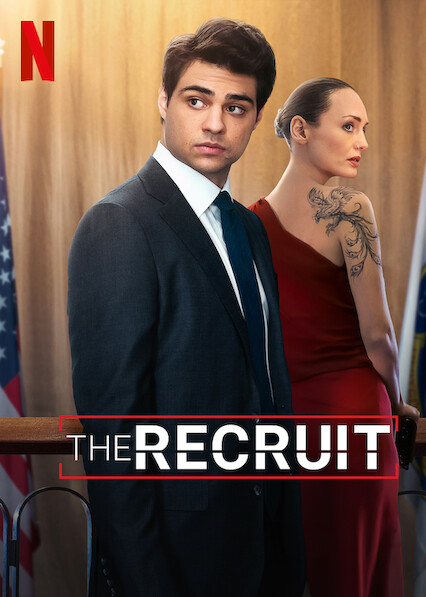
Noah Centineo (who looks like a young Mark Ruffalo) does a great job playing the lead character in this quirky series. Centineo’s role as Owen Hendricks, a rookie lawyer for the CIA who quickly gets in over his head, generates plenty of surprises and humor amid the violence.
Creator Alexi Hawley gives us a Central Intelligence Agency that is a nest of vipers ruled by Machiavellian rules. Trust no one!
As a CIA newbie, Owen is given stacks of “graymail,” written letters by people who threaten to release government secrets. Most of them are kooks, but Owen has to check them all. Sure enough, Owen finds someone who might be the real deal, a woman named Max Meladze (Laura Haddock), who is currently in an Arizona jail for murdering a truck driver. She is threatening to release secrets unless she is set free.
As Owen investigates Meladze’s claims, he’s beaten, tortured, and assaulted–much of the abuse caused by his naiveté and ignorance of spy craft. After all, Owen is a recent Law School graduate with little field training. But, Owen learns fast and as he follows the clues, larger issues emerge.
I love spy novels, spy movies, and spy series. If you’re looking for something different in the espionage realm, give The Recruit a try. GRADE: A-
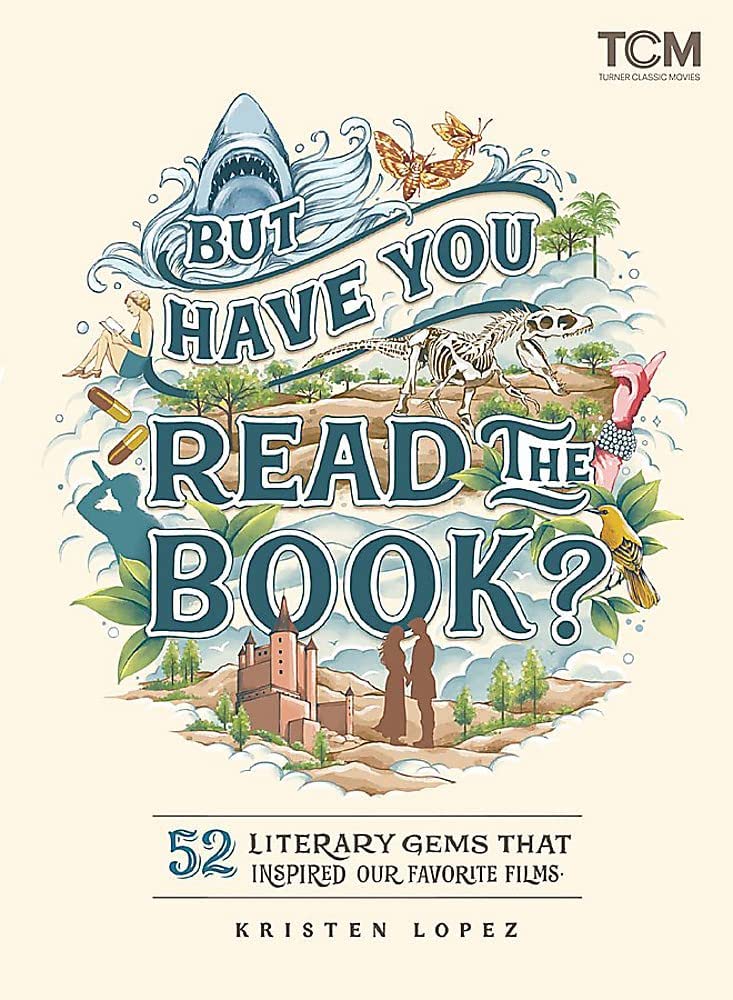
I’m a sucker for books like Kristen Lopez’s But Have You Read the Book? (2023). Lopez chose 52 movies based on books and delivers a quick but pithy comparison of the original book and the resulting movie in short essays. Lopez shows which movies are exceptional adaptions faithful to the book…or completely altered by cinematic “creative license.”
For example, Lopez discusses the various versions of Ridley Scott’s Blade Runner (based on Philip K. Dick’s Do Androids Dream of Electric Sheep?) and the controversy each iteration produced. I was also fascinated by Lopez’s commentary on movies that were deemed “unfilmable” like The Lord of the Rings and Dune that eventually got made.
Lopez shows why Stephen King hated Stanley Kubrick’s The Shining. But King loved Mike Flanagan’s film version of Doctor Sleep (2019).
Of course I now want to rewatch several of these movies…and reread many of the books!
How many of these 52 movies have you seen? How many of the original books have you read? Any favorites? GRADE: A
TABLE OF CONTENTS:
Introduction — 8
Frankenstein (1931) — 11
The Thin Man (1934) — 15
Wuthering Heights (1939) — 19
Rebecca (1940) — 24
To Have and Have Not (1944) — 28
Mildred Pierce (1945) — 32
Gentlemen Prefer Blondes (1953) — 36
Kiss Me Deadly (1955) — 40
Invasion of the Body Snatchers (1956) — 44
Psycho (1960) — 49
Dr. No (1962) — 55
To Kill a Mockingbird (1962) — 59
The Haunting (1963) — 64
In Cold Blood (1967) — 68
Valley of the Dolls (1967) — 73
Rosemary’s Baby (1968) — 76
True Grit (1969) — 81
A Clockwork Orange (1971) — 86
The Last Picture Show (1971) — 90
Willy Wonka and the Chocolate Factory (1971) — 94
The Godfather (1972) — 98
Jaws (1975) — 102
One Flew Over the Cuckoo’s Nest (1975) — 106
The Shining (1980) — 110
Blade Runner (1982) — 115
The Color Purple (1985) — 119
The Princess Bride (1987) — 124
Goodfellas (1990) — 128
The Silence of the Lambs (1991) — 132
The Age of Innocence (1993) — 136
The Joy Luck Club (1993) — 139
Jurassic Park (1993) — 143
The Remains of the Day (1993) — 147
Clueless (1995) — 150
Devil in a Blue Dress (1995) — 154
The Virgin Suicides (1999) — 158
Cruel Intentions (1999) — 162
Fight Club (1999) — 166
The Talented Mr. Ripley (1999) — 170
The Lord of the Rings: The Fellowship of the Ring (2001) — 175
Children of Men (2006) — 179
No Country for Old Men (2007) — 183
Coraline (2009) — 187
The Social Network (2010) — 191
The Hunger Games (2012) — 195
The Great Gatsby (2013) — 199
Call Me By Your Name (2017) — 203
Crazy Rich Asians (2018) — 207
If Beale Street Could Talk (2018) — 211
Little Women (2019) — 215
Dune (2021) — 219
Passing (2021) — 223
ACKNOWLEDGEMENTS — 227
BIBLIOGRAPHY — 229
About the Author — 240
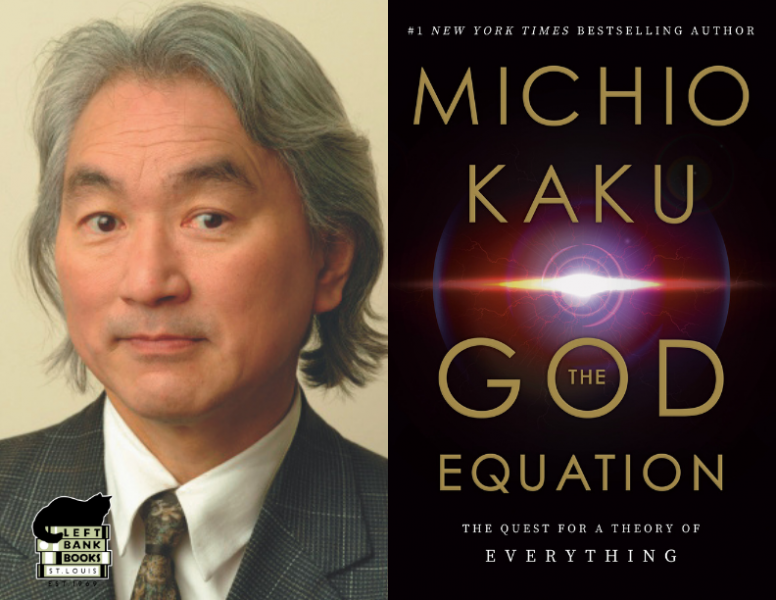
Michio Kaku, a theoretical physicist, writes about the greatest quest in Science. When Sir Isaac Newton discovered the laws of motion and gravity, he unified the rules of physics. Since then, physicists have been discovering new forces and incorporating them into ever-greater theories of how everything works. But the major breakthroughs of the 20th century–relativity and quantum mechanics–are incompatible. So today’s physicists have been attempting to find a way to combine the theories of relativity and quantum mechanics to ultimately tie all the forces in the universe together into one beautiful equation that can unlock the deepest mysteries of space and time.
We’re not there yet, but Michio Kaku thinks we’re getting close. Despite the complexity of these ideas, Kaku writes clearly about what research is being done and the direction physics is likely to take in the future. If you’re interested in the state of the quest for “The Theory of Everything,” The God Equation holds a lot of the answers. GRADE: A
TABLE OF CONTENTS:
Introduction to the final theory — 1
Unification, the ancient dream — 7
Einstein’s quest for unification — 32
Rise of the quantum — 52
Theory of almost everything — 77
The dark universe — 106
Rise of string theory : promise and problems — 141
Finding meaning in the universe — 182
Acknowledgements — 201
Notes — 203
Selected Reading — 211
Index — 213
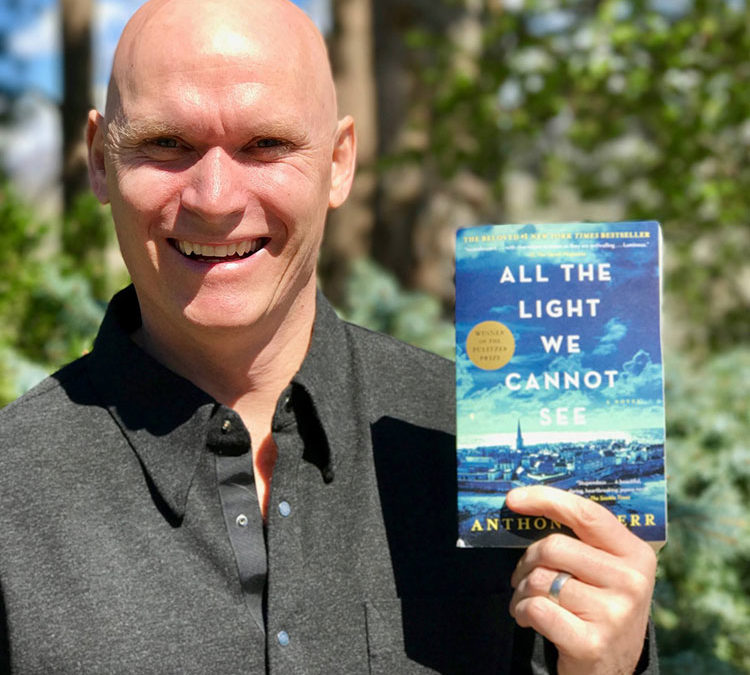
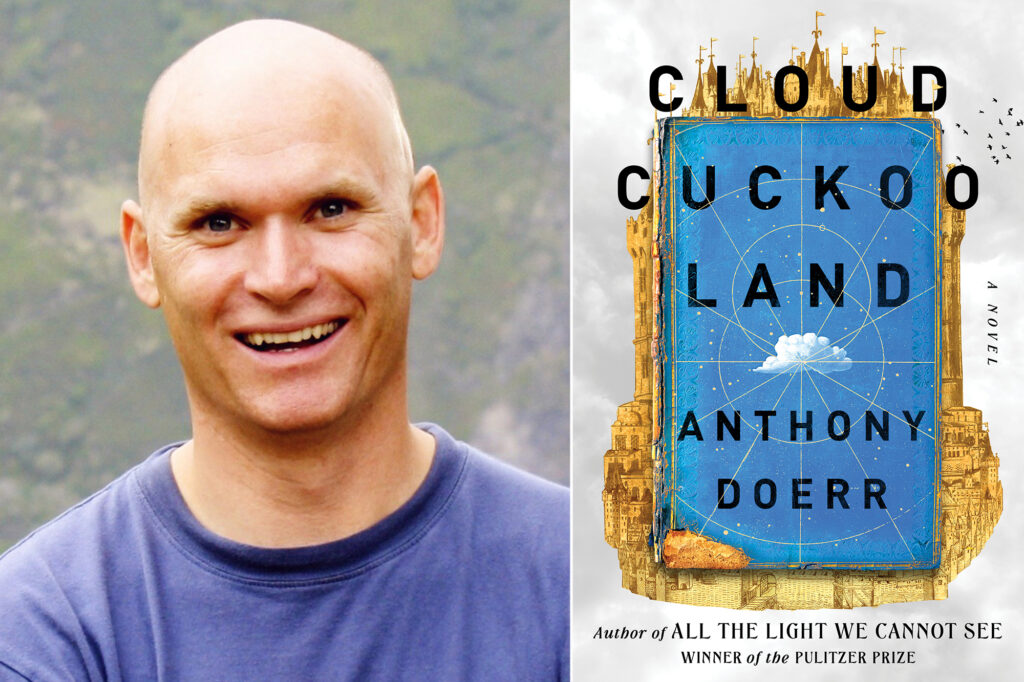
Diane and her Book Club read Anthony Doerr’s All the Light We Cannot See–which won the Pulitzer Prize–and loved it. So when Diane learned that the Just Buffalo Literary Center’s BABEL series was bringing Anthony Doerr to Buffalo to talk about his work we quickly called and bought a couple tickets.
Diane and her Book Club buddy, Cindy, heard Anthony Doerr speak at a New York City book event in March 2017. Diane was impressed by Doerr’s speaking style and his message on climate change. To prepare for Anthony Doerr’s Buffalo appearance, Diane read Doerr’s latest novel, Cloud Cuckoo Land–600+ pages!–which involves five characters from the Past to the Future.
Hundreds of Anthony Doerr fans showed up on March 30, 2023 at Kleinhans Music Hall (home of the Buffalo Philharmonic Orchestra) for Doerr’s appearance. Doerr uses a Power Point presentation to illustrate his points as he spoke about writing his novels and his concern for environmental issues. The evening ended with a Q&A session where Doerr demonstrated a lot of humor with his witty answers. When asked how he decompresses after writing all day, Doerr answered: “Mario Cart.”
Diane and I did not stay for Doerr’s book signing, but dozens did. I came away with a better idea of the Creative Process and the amount of research needed to produce a First Rate novel. Are you an Anthony Doerr fan? GRADE: A
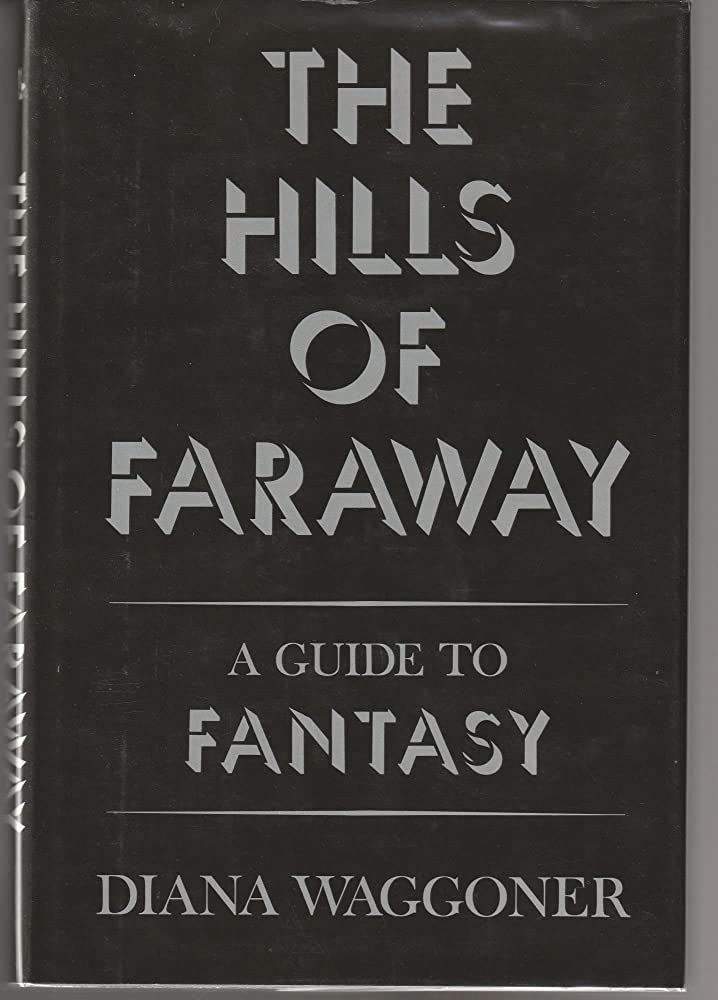
I came across Diana Waggoner’s The Hills of Faraway published in 1978 simply by chance. Yes, the book stops with fantasy works from 1975 so the book is dated. But, if you’re interested in J. R. R. Tolkien, George MacDonald, William Morris, Ursula Le Guin, Patricia McKillip, Fletcher Pratt, Thorne Smith, E. R. Eddison, Roald Dahl, A. Merritt, and dozens of other fantasy writers from 1858 to 1975, this is the reference book for you.
Waggoner spends 100 pages or so defining various types of fantasy fiction and discusses the sources of what we consider Modern Fantasy. Then she presents lists of various Fantasy books and stories organized by type. Waggoner also provides a sampling of classic Fantasy illustrations!
If you’re a fan of Fantasy works from the period Waggoner analyzes, The Hills of Fantasy provides plenty of insights and information about the Fantasy types and the authors who wrote them. It’s a fun book to browse and discover new facts. GRADE: A
TABLE OF CONTENTS:
Preface and Acknowledgements — v
Theory of fantasy — 3
Some trends in fantasy — 28
APPENDIX A: A timeline of fantasy, 1858-1975 — 65
APPENDIX B: Some fantasy award-winners –68
APPENDIX C: Fantasy illustration — 70
APPENDIX D: Subgenres of fantasy — 94
Sources — 119
A bibliographic guide to fantasy — 125
Index of Names and Terms — 303
Index of Titles — 314